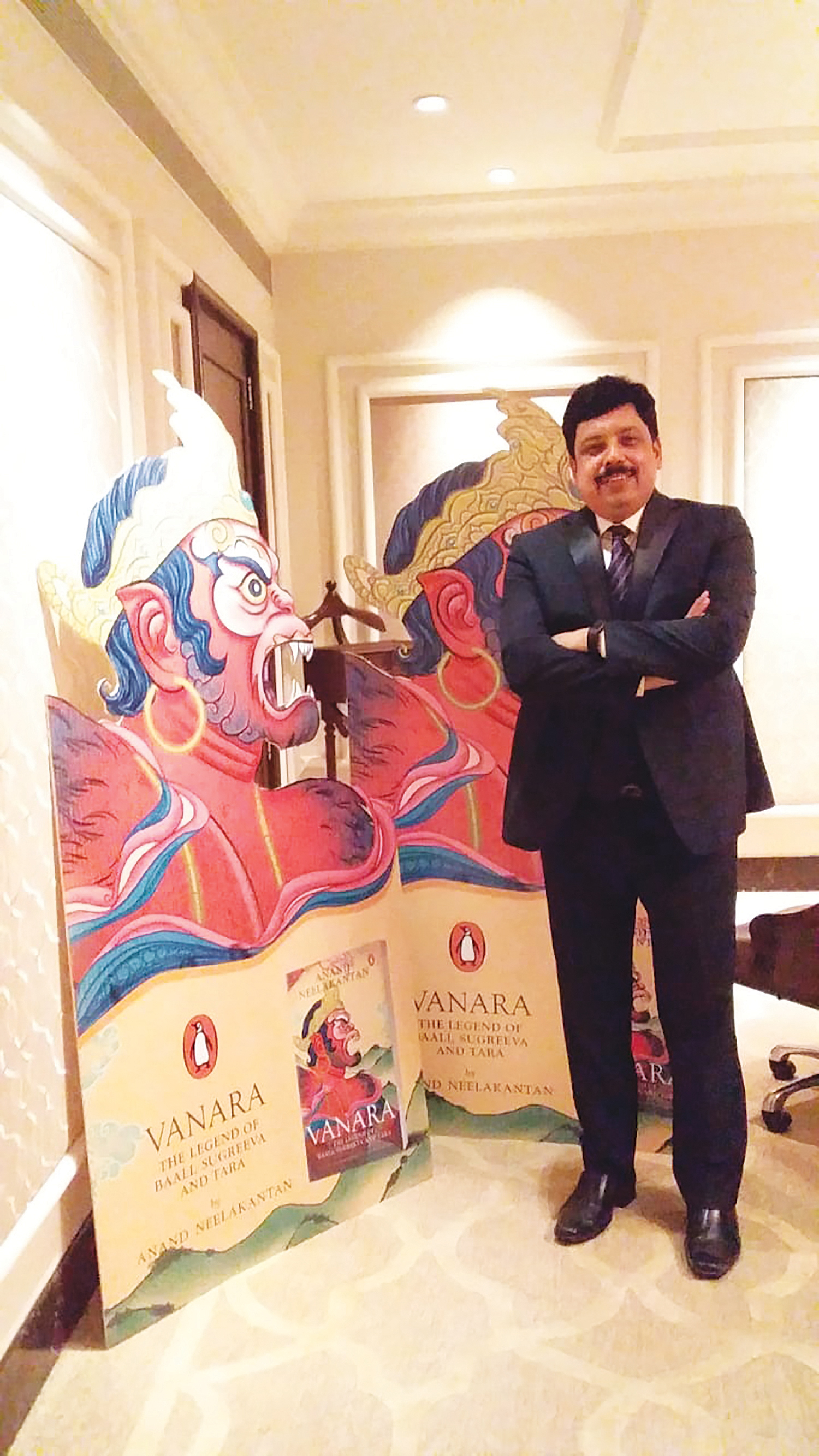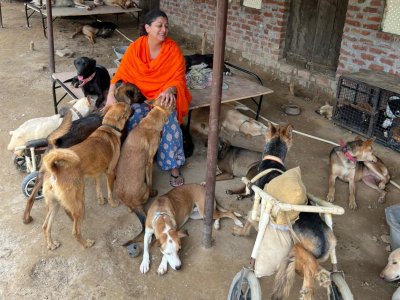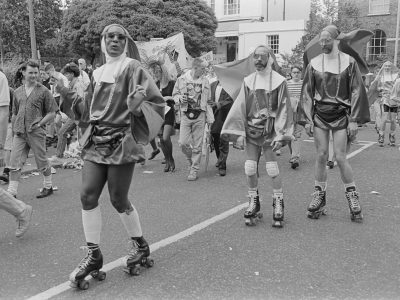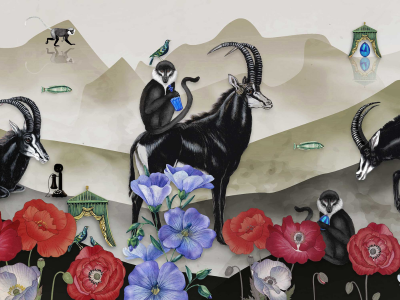Anand Neelakantan, author of bestselling mythological novels, believes there is no such thing as evil, taking a perspective which either shocks or enthralls
His tryst with storytelling started when he was about four. While growing up in Thrippunithura, a small town near Kochi where morning breaks with the sounds of temple bells, Anand Neelakantan used to listen to mythological tales with great awe. Author of bestselling novels like Asura-The Vanquished, he is known for his unique way of presenting the story of ‘the other side’. His books have given voice to the so-called evil characters like Ravana or Duryodhana.
His fifth and latest novel Vanara – The Legend of Baali, Sugreeva and Tara was launched recently. He is also penning down the prequel of the Baahubali trilogy for Netflix. Here he talks about his upcoming book, his love for mythology, the upcoming Netflix series, how his family supports his writing and more.
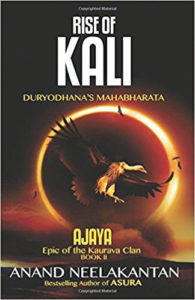
What inspired you to pen down the tale of Baali, Sugreeva and Tara in your latest novel? Tell us a little about the book.
This is part of my series where I have been writing about the characters which are not usually spoken about. Like my first book was Asura: The Vanquished – which was Ramayana told by Ravana. Then my Ajaya series – Ajaya: Roll of the Dice and Ajaya: Rise of Kali spoke about Mahabharata from the point of view of Duryadhana, Eklavya, Karna and Ashwatthama.
People who have read my books, know that I use a rational approach, as in there are no gods and demons in my book. All of them are tribes or different races. It is like a clash of civilisations. Vanaras in my book are tribes of forest.
Before Baali, they were slaves of both Asuras and Devas and he defeats everyone in a duel. He is an unvanquished warrior. He, along with his brother Sugreeva, is the person who frees them and builds the city Kishkinda — the Vanara empire. For them (Vanaras), the rules of Asuras or Devas do not apply. They are true to nature. They will not invade anyone; they will fight for food and territory.
While they are building the city, they meet this beautiful woman Tara, who is the Vanara physician’s daughter. Baali and Sugreeva fall for her and a war begins which brings an end to their empire. It is rare that a good love story is set in such an expansive, epic format. It is like Romeo & Juliet played in a Planet of the Apes setting.
So, this is arguably the first love triangle in history. This is the first time I am attempting something in the genre of romance. It should appeal to people who read romantic novels.
Your love for storytelling and mythology began from an early age when you grew up in the ‘town of temples’. Can you tell us a little about your tryst with mythology in the early years?
Since my childhood, Puranas were a part and parcel of my life. It was a fascinating world for me. Now I am 45 years, so I have been in touch with it for the last four decades.
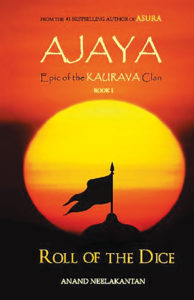
In my house too, it is a talking point. We often relate some contemporary incident to something that happened in the puranas. This is what I have been trying to bring into my books. Moreover, the struggle of humans does not change. Like, Lanka of Asura, Kishkinda of Vanaara or Mahishmathi of Baahubali – all these reflect the problems of present-day India.
What fascinates you to present a perspective on the other side of a story — the story from the view point of the so-called evil characters in a tale?
Traditionally, there is no concept of evil in India. The ‘good vs evil’ is a western concept. Semitic religions like Christianity, Islam and non-Indic religions have such binaries – hell vs heaven, God vs Satan, sin vs redemption. But in India, there is only the concept of karma.
So, Ravana or Duryodhana were never depicted as evil. They also do good and bad things; the balance will be different. But nobody escapes karma. These concepts became muddled because of Islam and Christianity’s influence. So through my books I am trying to take it back to its pristine purity by saying that there is nothing called good or evil and it is just a matter of perspective. I try to put myself in the shoes of Ravana and think. And I want my readers to think like that.
You are writing the prequel to Bahubaali for its Netflix series. How did this opportunity land up?
Rajamouli Sir (SS Rajamouli) had read my previous books and he was fascinated with the storytelling; the way I approached the idea on a grand scale. He wanted that grand scale for Baahubali. So, he called me and asked me to write some scenes.
Though I was an established writer at that time, he wanted to check whether I can write as per his vision and he liked what I wrote. So he asked me to create the characterisation for each character in the film. It will be a three-book series, which will have three seasons on Netflix. The first of which, The Rise of Sivagami, was released last year. The shooting for the series is going on.
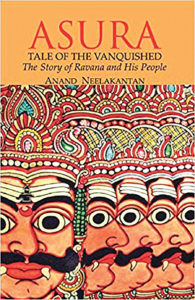
How do you think Indian literature has evolved in the past few years?
Many more people in India are reading books. Even though we say books are dying, they are not. In fact, the readership of books is expanding. We may not be reading as much as people read in many other countries but we are doing well. We hope we reach a stage where 90% or 95% of the people read the book. Then instead of 1 million sales, we will be talking about 1 billion sales of the novel.
Which writers’ work do you look up to?
I read books of various genres. There is no particular writer who I look forward to. But I keep going back to old masters. I keep rereading books by Malayalam writer VM Basheer, MT Vasudevan Nair and Kannada novelist SL Bhyrappa – he is a pioneer in retelling mythologies. I also like Ramesh Menon’s books. These are the books I keep referring to for my work.
Any message or writing tips for the aspiring writers?
My writing tip: Read a lot. If you don’t read, you can’t even attempt to write. Sufficient reading has to be done before you start writing. Otherwise, you can keep practising, but the craft will take a good shape only if you read a lot — especially if you read across genres. Then you will find out which genre you are good at and attempt the right one.
I like thrillers, but I don’t write thrillers. I write mythological books because that is what comes naturally to me. Many a times we make a mistake of attempting the genre we like. But maybe we do not have the capability to write that genre. Thus, in a day 80% of the time should be given to reading and 20% to writing. It should not be the other way around.
How supportive is your family when it comes to writing?
My first reader is always my wife and my first listener is my Jackie — my 6-year-old Labrador. He will not react, but he is always under my table when I write. He does not allow me to get up. So, he is my time keeper.
When I am writing about women characters, I consult my wife for her perspective. She reads all my books and also gives her comments. But my biggest critic is my 15-year-old daughter. She criticises my English, and she keeps correcting my pronunciation and grammar (laughs). She is an avid reader. She has read much more than I had read at her age. My son doesn’t read any books though, he is into sports and is good at it.
So, what’s next in the pipeline after Vanara?
I will continue writing for the Baahubali Netflix series. I am working on another book — Asuramarga, which will be about life lessons from the Asuras. I will try to convey how what we consider ‘bad’ is actually good — why emotions like anger and jealousy are good
for life.

